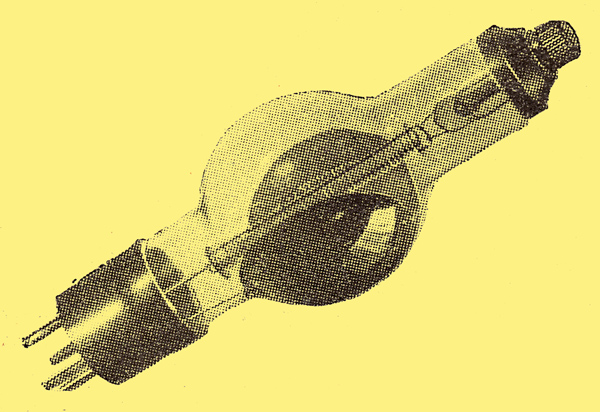|
A photocell employing secondary emission. This process was subject to much experimentation in the late 1930s as a way of increasing gain.

Photocells are now widely used in many different kinds of apparatus, and a new specimen introduced by Osram is especially interesting in view of its high sensitivity, low noise-level and wide frequency response. It is the type CWS24 and is claimed to have the sensitivity of the gas filled type with the low noise level usually associated only with vacuum types.
The evacuated glass envelope, which houses the electrodes, itself carries the primary cathode, which is of the caesium on silver-oxide type; this cathode is deposited on one half of the internal surface of the bulb. The other electrodes, the secondary cathode and the collector or anode, are carried by separate glass pinches.
In operation the primary cathode emits electrons under the influence of light; These strike the secondary cathode or target and their impact causes a greater number of electrons to be ejected from this electrode; and this secondary emission is collected by the anode.
The maximum potential between the primary cathode and collector should be 860 Volts but 500 Volts is usually sufficient. The voltage between the primary and secondary cathodes should be about 75% of that between the primary cathode and collector, and a safety resistance of 10,000 ohms should be inserted in the secondary cathode lead as a safety device. The primary emission is of the order of 40 μA / lumen after a preliminary ageing period, and the secondary emission coefficient is about 7.
The frequency response up to 1 MHz is of the same order as that obtained with a vacuum type of cell. The cell is priced at £8.
|